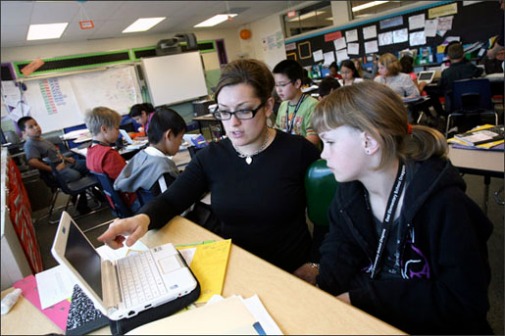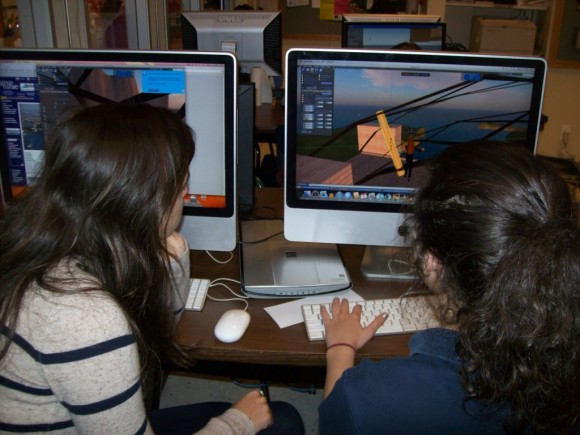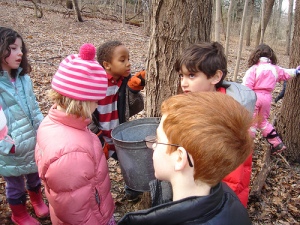Project Based Learning Resources
1. BIE Project Based Learning for the 21st Century
www.bie.org
This website is a resource for teachers wanting to know more about PBL and how to use or create a PBL curriculum. There is a Videos page which contains videos demonstrating about what PBL is, examples of projects, how to do PBL, international PBL, and webinars.
The Tools page is very useful and has a FreeBIEs section where you can find free materials to use, “such as planning forms, student handouts, rubrics, and articles for educators to download and use to design, assess, and manage projects” (http://www.bie.org/tools/freebies). The Tools page also has a Project Search section where you may select a source and subject area and locate existing projects you may want to use in your class. When I selected “Explorer Elementary,” I found projects that were very interesting and that I would like to use in my future classes. The projects had activities that would be very appealing and motivating to students. Here is an example of one I would like to do called Learning Garden that has a science base (http://www.bie.org/project_search/results/search&project_search_channel=32&ps_search_source=150&category=150/):
The garden enhances the social-emotional curriculum by requiring that students work together to get the work of gardening done. Gardening buddy projects have included creating a butterfly garden and writing a field guide to the garden, creating a poetry garden, and making pizza from garden products.
If you do not find a project that fits your needs or meets the standards for your students, there is a Do-It-Yourself Page that has many resources and step-by-step guides for planning, managing, and perfecting your own PBL curriculum (NETS Teacher 2. Design and Develop Digital Age Learning Experiences and Assessments). Furthermore, the website has other helpful pages, such as a Community and Blog page where you may collaborate with other professionals.
2. PBL Checklist pblchecklist.4teachers.org
This website provides “age-appropriate, customizable project checklists for written reports, multimedia projects, oral presentations, and science projects” (pblchecklist.4teachers.org). Teachers can easily create guidelines that fit the needs of their curriculum. The checklists are available in English and Spanish. What is great about having checklists available for students is that they can monitor their own learning and keep themselves on track through peer- and self-evaluation. Students will know exactly what the expectations are this way, and can turn it in so that you can see they are understanding the project tasks. Here is an example on the category of Cooperation in the Science checklist options for grades K-4:
Choose from the list below:
I behaved well.
I was nice to classmates.
I helped my group members.
I did not get bossy.
I shared things with all group members.
I worked well with other students.
I tried hard to finish.
I didn’t waste time.
I would select one or more of the criteria and add it to my checklist for students to keep and fill out. At the end of each day, I would have them turn in their checklist so that I could monitor learning. (NETS Teacher 3. Model Digital Age Work and Learning)
3. Tony Vincent’s Learning in Hand
learninginhand.com
“Learning in Hand is a resource for educational technology by Tony Vincent. From netbooks and web applications to iPods, iPads, and podcasting, Tony [a former teacher] has put together practical information for educators” (learninginhand.com). It explains that the iPod touch and iPad are preferred digital tools for students and that when it comes to mobile learning, more important than portability is the ability of the learner to connect, communicate, collaborate, and create using these tools.
This website has a page devoted to Project Based Learning with information on how to use technology for PBL. There are pages on this site for Podcasting, iPod touch, iPad, iPod, Netbooks, and PDAs. The pages tell how to use these digital tools for the classroom and provide links with apps and other resources pertaining to them. It also has a Blog page where Tony shares information. I would use this resource to get current ideas for how to incorporate technology into PBL. (NETS Teacher 2. Design and Develop Digital Age Learning Experiences and Assessments)
4. ThinkTank thinktank.4teachers.org
“ThinkTank is designed to help students develop a Research Organizer (a list of topics and subtopics) for reports and projects. Based on the subject assigned, the students can refine it by choosing from a variety of suggestions and by using a random subtopic generator. This helps students learn how to refine a subject so that it is more manageable for Internet research” (thinktank.4teachers.org).
I would use this resource to have students work together to create a research organizer for their projects. (NETS Student 3. Research and Information Fluency: Students apply digital tools to gather, evaluate, and use information)
5. NoteStar notestar.4teachers.org
“NoteStar is an Internet utility to assist in the preparation of research papers. Teachers and students can set up research projects with topics and sub-topics. Students may then take advantage of NoteStar’s many features to collect and organize their notes and prepare their bibliography page” (notestar.4teachers.org).
I can have students use the research organizers they created using ThinkTank and export them to NoteStar. A teacher needs to create a NoteStar account first for students to have access to. NoteStar makes it easy for teachers to manage projects, check sources, track progress, send messages to students, and help them organize their notes. With NoteStar, students are able to create sub-topics, assign topics within their group, take notes, track sources, and organize notes and sources into a printable document. (NETS Student 2. Communication and Collaboration: Students use digital media and environments to communicate and work collaboratively, including at a distance, to support individual learning and contribute to the learning of others).
6. Intel educate.intel.com
Intel offers some great resources for teachers. One, listed under ‘Education’ and ‘For K-12 Educators,’ is ‘Project-Based Approaches.’ Here, you can select ‘Designing Effective Projects’ and find Unit Plans that integrate technology into classroom projects. I particularly liked the units I browsed in the ‘Unit Plan Index’ on this site and am excited to use them in the future. The units are very in depth and organized. They provide links to ‘Things You Need,’ such as Assessment, Standards, Resources, and a Download of the Unit. These PBL units allow for NETS Student 1. Creativity and Innovation: Students demonstrate creative thinking, construct knowledge, and develop innovative products and processes using technology.
7. Teaching Science and Math teachscienceandmath.com
This website had an article called “Little Known Ways to Integrate Technology in Project Based Learning.” It lists strategies for integrating technology using free Web 2.0 resources for use in PBL. One of the strategies I would use is Book Trailer Videos where students create a book trailer to intrigue others about reading the book. It lists several free Web 2.0 tools students can use, such as Photo Story 3, Windows Movie Maker, iMovie, Animoto, Netvibes, etc., to take video or digital images to represent a portion of the story and then turn it into a movie. Other great strategies are Interactive Posters/Presentations, Podcasts- Audio/Video, Slideshows, and Collaborative Sharing. This demonstrates use of NETS Student 6. Technology Operations and Concepts: Students demonstrate a sound understanding of technology concepts, systems, and operations.
8. ALA.ORG The American Association of School Librarians: Best Websites for Teaching and Learning describes its page as:
The “Top 25” Websites foster the qualities of innovation, creativity, active participation, and collaboration. They are free, Web-based sites that are user friendly and encourage a community of learners to explore and discover.
These are the areas it covers/lists resources for:
I would use this as a list of resources students could use to select tools for working on their projects. (NETS Student 4. Critical Thinking, Problem Solving, and Decision Making: Students use critical thinking skills to plan and conduct research, manage projects, solve problems, and make informed decisions using appropriate digital tools and resources.)
9. Cyberbee
This website has plenty of resources. One page is ‘Cyberbee’s Web Picks’ and lists many websites that are helpful for teachers and students. The only problem for me is that there is no real organization to the list. Some examples I found that would be good resources for studying a project topic are neoK12 (neok12.com), which has educational videos, lessons, and games for K-12 school kids, and StudyJams (studyjams.scholastic.com), that has videos or slideshows for introducing elementary math and science topics. Widgetbox (widgetbox.com) was also listed on the site, which has already created applications that can be pasted to a webpage, and I would use this resource as a tool for students building their own websites. (NET Teacher 3. Model Digital Age Work and Learning, c. and d.
10. TeachThought 11 Essential Tools For Better Project-Based Learning
This article is described as a ‘mini guide’ to some project based learning tools. One that I would use is a free app called Mindmeister, where students can work collaboratively to brainstorm and map out ideas in project planning. Another free app is Glogster, which students would use to create digital posters and other multimedia projects. I also thought Myhistro would be useful for PBL in my future classroom. It is a browser-based tool that “enables students to combine blogging, videos and photographs on interactive Google Earth and Google Maps.” This tool has a chronological timeline – great for presentations in History, Geography and Social Science. (NETS Student 1. Creativity and Innovation, 2. Communication and Collaboration, and 6. Technology Operations and Concepts)



